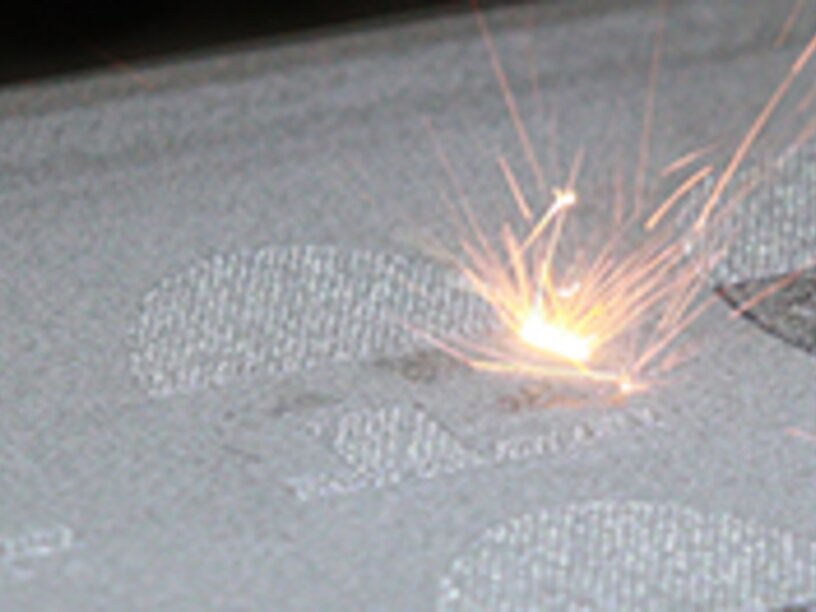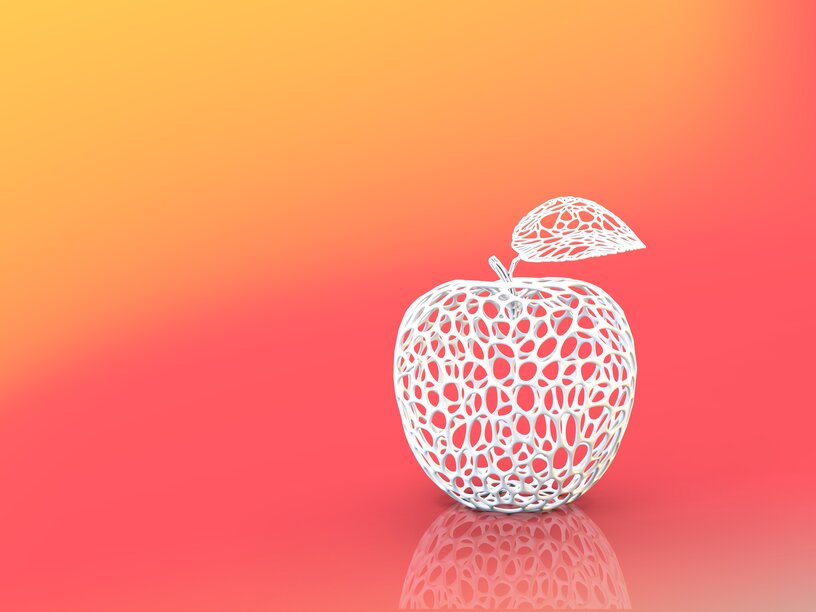
How to Design for Additive Manufacturing
FEBRUARY 01, 2023 | Reading time: 4 min
Just as additive manufacturing has revolutionized how parts and components can be made, it’s also completely changed how we should look at the design of products. Find out how this new approach is an integral part of the industrial 3D printing process and which design tools are at your disposal.
Optimizing design for industrial 3D printing
All additive manufacturing projects begin with design. This phase impacts every aspect of a final product, ranging from the part's end-user applications to the cost of its fabrication.
As a technology that breaks the boundaries of what was previously thought possible in manufacturing, successful AM design requires a similarly innovative approach. This requires a paradigm shift in the way we think about design and production — and that’s what we aim to teach students who enroll in our Additive Manufacturing Designer certificate program.
Creating parts and products that are lighter, better performing and potentially cheaper to produce stand out as key advantages of AM. But these possibilities can't easily be realized if your understanding of manufacturing design is rooted in more traditional methods. As such, our program aims to give designers a new perspective — an "additive thinking" mindset.
Benefits of additive manufacturing design
Let’s look at the end goals that additive manufacturing and design can help designers achieve.
Part consolidation
With 3D printing, it’s possible to find opportunities where a part that previously consisted of dozens — or even hundreds — of smaller components can be reduced to the production of far fewer parts. This has a range of potential benefits for manufacturers:
-
Fewer parts mean simplifying complex assemblies of multiple components, which can be time consuming and costly.
-
Assembly processes and quality control can be cut down, which reduces production costs.
-
Fewer parts needing to work in unison means there are fewer potential points of failure.
-
Weight reduction can improve performance and efficiency.
Mass customization
Products created with additive manufacturing can be uniquely designed to fulfill very specific criteria, whether it’s on a large or small scale. Bespoke items can be tailored to the end user’s requirements and then replicated precisely for as many or as few iterations as needed. This can be achieved with little impact on cost and production time, which has always been a major factor when it comes to mass production.
An excellent example of this is the 3D printing of glasses and eyewear — a niche field that EOS has considerable experience in. EOS has worked with brands like YOU MAWO and Hoet to achieve their individual goals using additive design and manufacturing techniques. Our design briefs for customers in this space center on highly specific targets, ranging from creating unique styles and modeling better-fitting glasses to reducing the cost or carbon footprint of production.
To accomplish these kinds of goals, designers need to approach the challenge with a different mindset — they need to think additively, rather than subtractively.
Design Tools dedicated to additive Manufacturing
Traditional computer-aided design (CAD) tools like Pro/ENGINEER, Catia and Siemens NX (formerly known as Unigraphics) were created with subtractive manufacturing in mind. These types of design tools take the approach where, if you want to create a hole in a block, for example, you would drill one into it.
This is the complete opposite to how we go about creating a hole from an additive perspective. To think and design additively means to create the block around the hole, rather than put the hole in the block. Traditional CAD tools do an excellent job when designing for subtractive manufacturing, but they’re not suitable for additive manufacturing.
Hence the need for new specialist additive CAD programs that allow designers to create parts differently. Three of the most effective software packages available are nTopology, Altair and Synera.
nTopology
This program is excellent for creating end-to-end workflows with added lattices and mesh exports from separate components. It brings simulation and data-driven design into your development process to give you the power to create more efficient parts more effectively.
Altair
For functional designs that are optimized for performance and production, Altair allows you to base your designs on topology optimization and manufacturing simulation suggestions. It also allows you to validate manufacturability and introduce necessary changes to part geometries, orientations and supports.
Synera
Synera is an ideal software for setting up simulations, achieving lightweight designs and integrating lattice structures into your designs. It also has tools you can use to estimate and optimize design costs, along with support structure optimization features.
We give our learners the choice of focused training on their choice of these three tools in our Additive Manufacturing Design certificate program because each offers different opportunities for key aspects of additive design. With expert guidance and experience included as part of the program, we provide our students with the skills and knowledge to benefit any additive design team.
Design with intention
Additive manufacturing allows designers to truly hone in on the desired outcome of a project and find innovative ways to achieve them through creative application. This can come in many forms:
-
Design to cost: Reducing production costs through better-managed materials, waste and processes.
-
Design to function: Enhancing performance or quality with weight reduction, finding new structure types or using different materials can all be possible with additive design.
-
Design for generative: Use software and computational algorithms to create, test and refine high-performance geometries.
-
Design for the environment: Use additive design methods to focus on carbon footprint and waste reduction, as well as explore the applications of more eco-friendly materials.
As additive manufacturing allows you to push the boundaries of design and production, it’s an ideal medium for finding opportunities to flip conventional design approaches on their head. This is why we teach our learners how to transform their mindset to look at problems from a completely different perspective and then give them the skills to implement those solutions using tools purposely created for additive design.
Our Additive Manufacturing Design certificate program enables your development of the necessary skills to become a truly additive designer. E-learning sessions, live webinars and practical task exercises help you hone your advanced design skills and train you to think additively.





